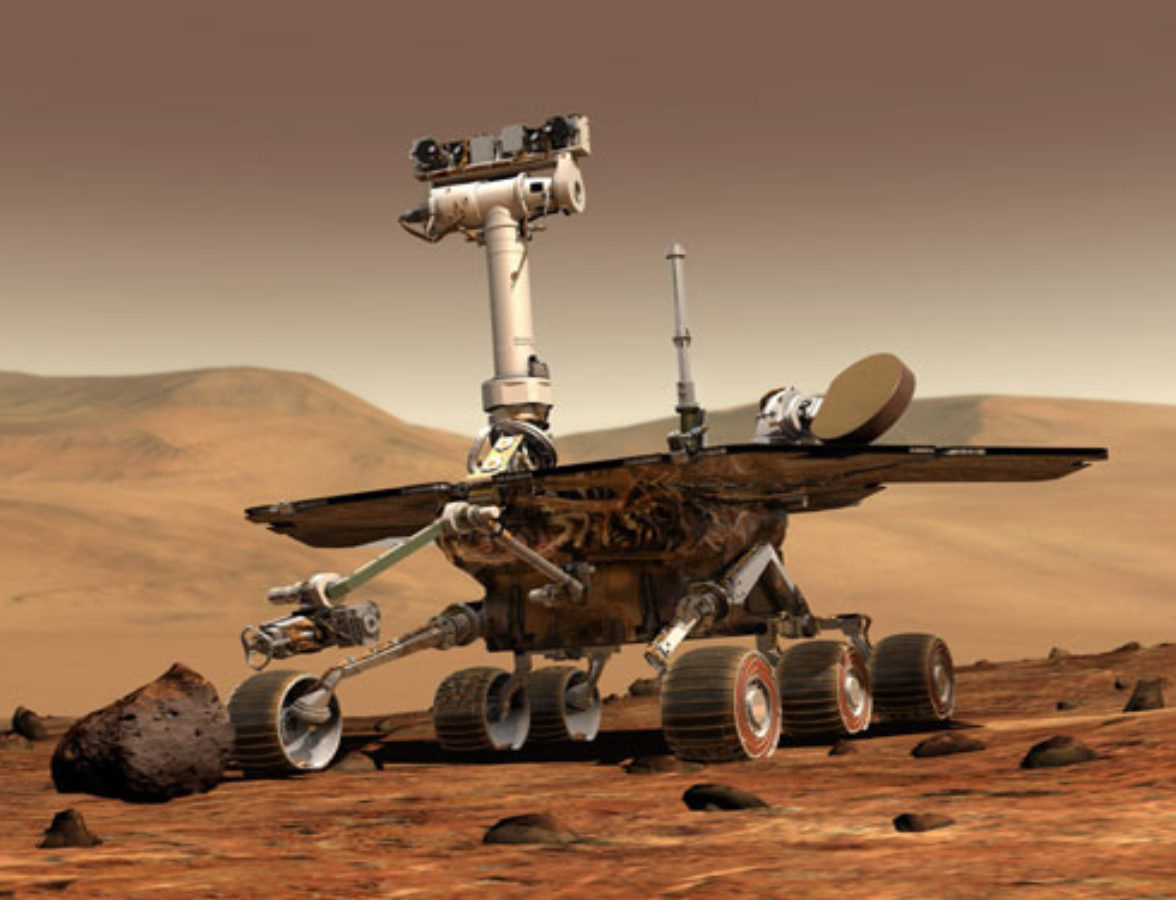Rover on Mars continues to collect new information

With 833 Martian days explored on the Big Red Planet, NASA’s Curiosity has gathered thousands of hours of unique and irreplaceable data suggesting that Mars once contained water capable of sustaining life. Curiosity’s next big journey will be to venture up Mount Sharp. (Photo Credit: mars.nasa.gov)
By Mikki Stacey, Staff Writer
After 833 “Martian days” (about 856 Earthling days), otherwise known as “Sols,” Curiosity rover has found a certain potential on Mars by taking pictures and running tests. The rover took samples of mudstone from various sites on the planet during its first Earth year there. This mudstone serves to evidence that billions of years ago there were bodies of water on Mars—the stone having formed from lake sediments.
Curiosity made its way to Gale Crater on July 24, 2013. During this journey, the rover studied an area of layered sandstone that lead up to Mount Sharp, its ultimate destination. The layers in the sandstone likely developed from lake and stream sediment collecting over time.
Gathering this evidence, however, was not easy for the rover; the crater’s rough surface damaged Curiosity’s aluminum wheels. The holes that developed forced the rover to look for softer paths to travel on and, on occasion, to drive in reverse to prevent further issues. Despite its acquired impairments, the rover drilled into the mountain for the first time on September 24, 2014. This event took place at the base of the mountain, the Pahrump Hills outcrop.
Curiosity also found small salt crystals—further evidence of a former body of water. In fact, the lake that Gale Crater once was has likely disappeared and reappeared several times. This elusive lake shaped Mount Sharp with its sediment. It seems pretty clear: there has been water on Mars. What is more significant is that the water was capable of sustaining life, being neither too salty nor acidic.
NASA’s Curiosity rover is not done with its journey yet. So far, it has explored only a mere six miles of Mars. The next segment of its research will come as Curiosity ascends Mount Sharp.
NASA’s plans with Curiosity rover are amazing. Along with Microsoft, NASA has created OnSight, software that will utilize wearable technology to allow scientists to research on Mars virtually in conjunction with Curiosity. OnSight will take Curiosity’s images to produce a 3D picture that will help scientists understand Mars spatially, but as of yet the potential outcomes of NASA’s research are only imaginable.
